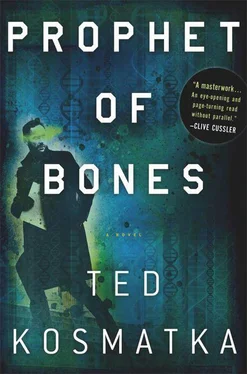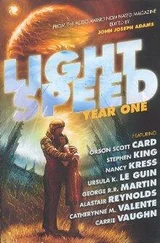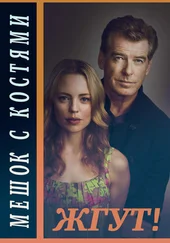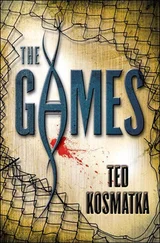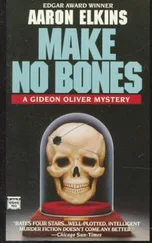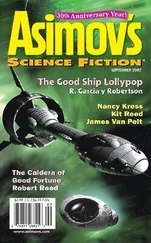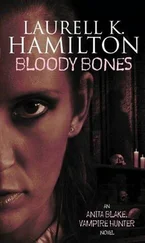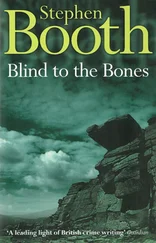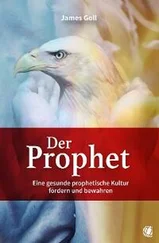Charles stared at the first page and something happened in his face. A change.
“Can you read it?” Paul asked.
Charles smiled. Actually smiled. “No. No, I can’t. I just like the patterns. I get a feel for the patterns is all. Like music in my head.”
“Does one sound different than another?”
“Oh, they all sound different. They’re all beautiful.”
Charles flipped the page, scanning down the sheet with his index finger. “A worm genome is no less beautiful or complex than a blue whale’s, no less beautiful than any other kind of life. Life is life.”
He flipped another page.
“But sometimes, I think I can almost tell the species apart. Like music, again. The really, really long pieces.”
“If you can tell one kind from another, can you tell what species you’re looking at?”
“No, no, I’d never say that. It’s just a feeling I get. Like when you’re listening to two different jazz tunes. You can sometimes tell they’re the same artist, even if you can’t name the song.”
Charles closed his eyes, as if listening to some hidden music only he could hear.
“I’ve seen this before,” he said. “Or a part of it. They went to great lengths not to give any one researcher the whole thing.”
“What do you mean?”
“It came in while you were in the hospital. Shipped from Indonesia.”
“That’s not possible. The bones were confiscated, and I had the only DNA samples.”
Charles shrugged. “It’s what happened.”
Paul nodded. “What species did they say the samples came from?”
“It was just a number code. No species designation.”
“What did the results show?”
“I never saw the comparison assays. I just saw a few thousand lines of raw sequence.”
“What did you think?”
“It’s why I left.”
Charles flipped through more pages. Outside the window, evening was beginning to fall.
“This is how it works,” Charles said. He picked up a pencil and started drawing again, an absentminded doodle. His eyes lost their focus. “I can read the sequence—A, T, C, and G. Nucleotide base pairs all lined up in a row, one after another.” The pencil traced the curve of a beak. “Every three letters corresponds to a certain amino acid, and you can picture it in your mind, see the shape, and the amino acids combine one after another to form proteins, following known rules of conformation, hydrogen and carbon, single and double valence bonds, all of it folding and bending according to stringent, merciless logic.” He drew the arc of the bird’s wing. Charcoal on paper, a dusting of feathers. “More amino acids are added as the sequences get longer, and you can see the proteins in your head assembling from just the code, hundreds of letters, and here is where it gets tricky, because at the level of the protein, it is not just the sequence that matters but the direction in which it is read, and I close my eyes.” Charles closed his eyes, a look of rapture on his face. The hand continued to move across the page, continuing to draw. The bird’s feet took shape. Perched on a branch. A finch, Paul realized.
Charles continued: “The conformation of the protein changes as you imagine the amino acids lining up, and the whole thing flips into a new configuration that affects the shape of what’s come before, and it grows and becomes more complex, building on itself, each bond following the known rules, and you can almost reach out and touch it, until it gets to a certain size… and then I lose it.” Charles opened his eyes. He stared at Paul. “It gets too big for me to hold in my head, a few thousand amino acids folding in just the right way… and it loses coherence. It slips through my fingers.”
“You can see that?”
“For a little while.”
“I’ve never heard of anybody being able to do that.”
“It’s nothing so special.”
“Protein structure visualized from just a base-pair sequence? I disagree.”
“No, I am a failure. I have tried and tried and I can get no further.” Charles looked down at his drawing. The bird was complete. A finch, perched on a branch. Lifelike, caught in the act of living.
“It is a zebra finch,” Charles said. “Have you heard of it?”
“It sounds familiar.”
“They sing beautiful songs in the wild. Whether instinctual or based in culture, no one knew; so an experiment was performed. It turns out that if you raise a zebra finch in captivity, where it never hears another finch, those songs are lost, replaced by simpler calls.”
“So they are learned.”
“But a strange thing happens if you take these cultureless birds and raise them together over successive generations. The songs grow elaborate over time, each generation building upon what came before, until after a certain number of generations, the wild-type song culture is reestablished. Generated de novo. So in a sense, these cultural songs were there in the genome all along.”
Charles handed Paul the drawing.
“Using a system of math called recursive equations, it’s possible to model how this could happen. I wonder if it works like that with human cultures as well.”
Paul gave the drawing back to Charles. “It’s a beautiful picture.”
Charles placed the drawing on the table with the others. “Imagine what God must see when He looks at us,” he said. “Imagine the mind of God, able to visualize amino acids and all the conformational laws right down the physics of the nuclear bonds, up through protein structure and up into cellular structure. Imagine that. A visualization up through meiosis, and cell synthesis, and ATP, and up through multicellularity into organs and organ systems, and up into the whole living, breathing, functioning higher organism that has to then go out and hunt for its dinner, or photosynthesize—and then reproduce itself, generation after generation, subtle variations in behavior and instinct, social organization, territoriality, migration, song culture, down through millennia. Now that is amazing. To be able to hold all that in your mind at once. To be a figment in the mind of God.”
Paul stared at Charles. He didn’t know what to say.
Finally he asked, “What about the new code?”
“That’s the thing,” Charles said. “The reason I left.”
“What?”
“To me…” Charles continued. “It was a strange music. I don’t want to listen anymore.”
He restacked the printed sheets and handed them back to Paul.
“So what do I do?” Paul asked.
“With the photos of the dig? I’d burn them and forget them.”
“And if I can’t?”
“You have the code. You have the assays. The rest is just math.”
“What do you mean?”
“You don’t need the lab equipment. You can do the comparison anywhere with a computer powerful enough.”
“Will you help me?”
“No. I’ve said too much already.”
“I can’t do this by myself.”
“Then don’t do it.”
Paul looked at the birds scattered across the table. Despite what Charles had said, the drawings held their own beauty, distinct from the birds themselves. They were their own work of art.
“Thank you for your time, Charles.”
Paul stood. Charles walked him to the door.
“One last thing before I go,” Paul said. “There was a list of names in your office. Museums and laboratories. What were you doing with that list?”
“Following the money.”
“To those places?”
“Yes. Money has descent, just like any living thing. There are trophic levels.”
“What do you mean?”
Charles shook his head. “I’m done with that now. I don’t want to think about it anymore.” Charles shifted his weight from foot to foot.
Paul could see that Charles was growing agitated. “Thank you,” he said. “So you’re sure that you’re not coming back?”
Читать дальше
